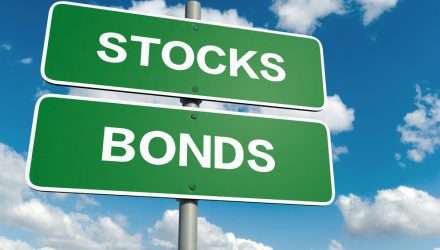Don’t call it a comeback, but the stocks are rallying to hopefully end a September sell-off on a high note. But amid the Covid-19 pandemic, the safe confines of bonds are still edging out stocks in a memorable 2020 year.
“Despite a 47% rise since March 23, the S&P 500 is up just 2.1% in 2020,” a Wall Street Journal report said. “The Dow Jones Industrial Average is down 4.8% and the Russell 2000 index of small-capitalization stocks is off 12%. Only the Nasdaq Composite has managed a meaningful increase this year, up 22%, because of a surge in a handful of big technology stocks.”
“Government-bond yields, meanwhile, have dropped to historic lows as prices have risen and investors have scrambled for havens in the midst of the coronavirus pandemic. The Fidelity U.S. Bond Index Fund is up 7.1% this year, while the iShares U.S. Treasury Bond ETF has risen 9%,” the report added further.
“It’s more normal than many people assume” for bonds to outperform stocks, said Scott Mather, who manages Pimco’s $70 billion Total Return Fund. “People don’t understand you can do pretty well in bonds.”
Other Bond ETF Options
For fixed income investors who want to play the long end of the yield curve when it comes to corporate bonds can look at ETF such as the FlexShares Credit‐Scored US Long Corporate Bond Index Fund (CBOE: LKOR). LKOR follows the Northern Trust Credit-Scored US Long Corporate Bond Index, which addresses potential corporate bond liquidity challenges by optimizing a carefully selected subset of all credit issuers from which illiquid, orphaned and small lot names have been removed.
Additionally, investors can opt for an active option like the Principal Investment Grade Corporate Active ETF (IG). IG seeks to provide current income and, as a secondary objective, capital appreciation.
The fund invests at least 80% of its net assets, plus any borrowings for investment purposes, in investment grade corporate bonds and other fixed income securities at the time of purchase. “Investment grade” securities are rated BBB- or higher by S&P Global Ratings (“S&P Global”) or Baa3 or higher by Moody’s Investors Service, Inc. or, if unrated, of comparable quality in the opinion of those selecting such investments.
Key features of IG:
- Active management: Combines bottom-up independent credit research with top-down strategy, seeking alpha through credit selection, industry rotation, and curve positioning
- A straight forward process: Investment grade exposure, free of derivatives, unrated issues, and large duration bets
- A strategic perspective: Forward looking, iterative process seeks credits exhibiting stable-to-improving credit rating trajectory which may benefit from spread compression and income premiums
For more market trends, visit ETF Trends.


